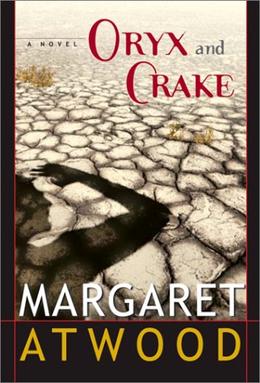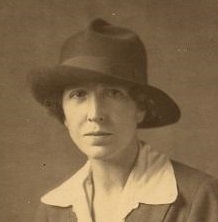21st century
This section needs additional citations for verification .(July 2015) |
2000s
Fiction
- Ella Minnow Pea (2001) by Mark Dunn (MacAdam/Cage, 2001)
- Feed (2002) by M. T. Anderson (Candlewick Press, 2002) [51]
- In the Presence of Mine Enemies (2003) by Harry Turtledove (2003, the first 21 pages were originally a short story published in 1992)
- Jennifer Government (2003) by Max Barry (Doubleday, 2003)
- Oryx and Crake (2003) by Margaret Atwood (Doubleday, 2003) [52]
- Collaborator (2003) by Murray Davies
- Asphalt (2004) by Carl Hancock Rux (Simon & Schuster, 2004)
- Cloud Atlas (2004) by David Mitchell (Sceptre, 2004) [53]
- The Plot Against America (2004) by Philip Roth (Houghton Mifflin, 2004)
- Divided Kingdom (2005) by Rupert Thomson (Alfred A. Knopf, 2005) [54]
- Never Let Me Go (2005) by Kazuo Ishiguro (Faber and Faber, 2005) [54] [55] [ not specific enough to verify ]
- Armageddon's Children (2006) by Terry Brooks (Del Rey Books, 2006)
- The Book of Dave (2006) by Will Self (Viking Press, 2006) [56] [ not specific enough to verify ]
- Day of the Oprichnik (2006) by Vladimir Sorokin (Zakharov Books, 2006) [57]
- The Road (2006) by Cormac McCarthy (Alfred A. Knopf, 2006)
- Blind Faith (2007) by Ben Elton (Bantam Press, 2007)
- Rant (2007) by Chuck Palahniuk (Doubleday, 2007)
- Last Light (2007) by Alex Scarrow (Orion Publishing Group, 2007)
- Nontraditional Love (2008) by Rafael Grugman (Liberty Publishing House, 2008) [58] [59]
- World Made by Hand (2008) by James Howard Kunstler (Atlantic Monthly Press, 2008)
- Farthing , Ha'penny , and Half a Crown , series by Jo Walton (2006–2008)
- The City & the City (2009) by China Miéville (Del Rey Books, 2009)
- Shades of Grey (2009) by Jasper Fforde (Viking Press, 2009)
- The Windup Girl (2009) by Paolo Bacigalupi (Night Shade Books, 2009)
- The Year of the Flood (2009) by Margaret Atwood (McClelland & Stewart, 2009) [60] [ non-primary source needed ]
- Z213: Exit (2009) by Dimitris Lyacos (Shoestring Press, 2009) [61]
Young adult fiction
- Gathering Blue (2000) by Lois Lowry (Houghton Mifflin, 2000)
- Mortal Engines (The Hungry City Chronicles #1) (2001) by Philip Reeve (Scholastic, 2001)
- Noughts and Crosses (2001) by Malorie Blackman (Random House, 2001) [62]
- The House of the Scorpion (2002) by Nancy Farmer (Atheneum Books, 2002)
- Among the Barons (Shadow Children #4) (2003) by Margaret Peterson Haddix (Simon & Schuster, 2003)
- Among the Betrayed (Shadow Children #3) (2003) by Margaret Peterson Haddix (Simon & Schuster, 2003)
- The City of Ember (2003) by Jeanne DuPrau (Random House, 2003)
- Among the Brave (Shadow Children #5) (2004) by Margaret Peterson Haddix (Simon & Schuster, 2004)
- Messenger (2004) by Lois Lowry (Houghton Mifflin, 2004)
- The People of Sparks (2004) by Jeanne DuPrau (Yearling, 2004)
- Among the Enemy (Shadow Children #6) (2005) by Margaret Peterson Haddix (Simon & Schuster, 2005)
- Checkmate (2005) by Malorie Blackman (Random House, 2005) [63]
- Uglies (2005) by Scott Westerfeld (Simon Pulse, 2005) [64]
- Pretties (2005) by Scott Westerfeld (Simon Pulse, 2005)
- Among the Free (Shadow Children #7) (2006) by Margaret Peterson Haddix (Simon & Schuster, 2006)
- Genesis (2006) by Bernard Beckett (Houghton Mifflin Harcourt, 2006) [65] [ unreliable source? ]
- Life as We Knew It (2006) by Susan Beth Pfeffer (Harcourt Children's Books, 2006)
- Specials (2006) by Scott Westerfeld (Simon & Schuster, 2006)
- Extras (2007) by Scott Westerfeld (Simon & Schuster, 2007)
- Incarceron (2007) by Catherine Fisher (Hodder & Stoughton, 2007)
- Unwind (2007) by Neal Shusterman (Simon & Schuster, 2007)
- The Host (2008) by Stephenie Meyer (Little, Brown and Company, 2008) [66] [ non-primary source needed ]
- The Dead and the Gone (2008) by Susan Beth Pfeffer (Harcourt Children's Books, 2008)
- The Declaration (2008) by Gemma Malley (Bloomsbury Publishing, 2008) [67]
- From the New World (2008) by Yusuke Kishi (Kodansha Novels, 2008)
- Gone (2008) by Michael Grant (HarperCollins, 2008)
- The Hunger Games (2008) by Suzanne Collins (Scholastic, 2008)
- The Diamond of Darkhold (2008) by Jeanne DuPrau (Yearling, 2008)
- The Resistance (2008) by Gemma Malley (Bloomsbury Publishing, 2008) [68]
- Sapphique (2007) by Catherine Fisher (Hodder & Stoughton, 2008)
- Catching Fire (2009) by Suzanne Collins (Scholastic, 2009)
- The Forest of Hands and Teeth (2009) by Carrie Ryan (Random House, 2009) [69]
- The Maze Runner (2009) by James Dashner (Delacorte Press, 2009)
2010s
Fiction
- The Envy Chronicles (series) (2010) by Joss Ware (Avon, 2010–2015)
- The Passage (2010) by Justin Cronin (Ballantine Books, 2010)
- Super Sad True Love Story (2010) by Gary Shteyngart (Random House, 2010)
- Ready Player One (2011) by Ernest Cline (Random House, 2011)
- Shimoneta (2012) by Hirotaka Akagi (Shogakukan, 2012) [70]
- Bleeding Edge (2013) by Thomas Pynchon (Penguin Press, 2013)
- The Bone Season (2013) by Samantha Shannon (Bloomsbury, 2013) [71]
- The Circle (2013) by Dave Eggers (Alfred A. Knopf, 2013) [72]
- MaddAddam (2013) by Margaret Atwood (Nan A. Talese, 2013) [73]
- The Office of Mercy (2013) by Ariel Djanikian (Viking Books, 2013) [74]
- Wool (2013) by Hugh Howey (Simon & Schuster, 2013) [75]
- Dominion (2014) by C. J. Sansom (Mulholland Books, 2014)
- Submission (2015) by Michel Houellebecq (Groupe Flammarion, 2015)
- The Heart Goes Last (2015) by Margaret Atwood (Penguin Random House, 2015)
- Friday Black (2018) by Nana Kwame Adjei-Brenyah (Mariner Books, 2018)
- Tears of the Trufflepig (2019) by Fernando A. Flores (FSG Originals, 2019)
- The Testaments (2019) by Margaret Atwood (Nan A. Talese, 2019)
Young adult fiction
- Matched (2010) by Ally Condie (Dutton Children's Books, 2010) [76]
- Mockingjay 2010) by Suzanne Collins (Scholastic Corporation, 2010) [77]
- Monsters of Men (2010) by Patrick Ness (Candlewick Press, 2010) [78]
- The Scorch Trials (2010) by James Dashner (Delacorte Press, 2010)
- Across The Universe (2011) by Beth Revis (Razorbill Books, 2011)
- Crossed (2011) by Ally Condie (Dutton Children's Books, 2011) [76]
- The Death Cure (2011) by James Dashner (Delacorte Press, 2011)
- Delirium (2011) by Lauren Oliver (HarperCollins, 2011)
- Divergent (2011) by Veronica Roth (Katherine Tegen Books, 2011)
- Legend (2011) by Marie Lu (G. P. Putnam's Sons, 2011)
- Shatter Me (2011) by Tahereh Mafi (HarperCollins, 2011)
- The Unwanteds (2011) by Lisa McMann (Aladdin Paperbacks, 2011)
- Wither (2011) by Lauren DeStefano (Simon & Schuster Children's Publishing, 2011)
- Article 5 (2012) by Kristen Simmons (Tor Teen, 2012)
- Pandemonium (2012) by Lauren Oliver (HarperCollins, 2012)
- Insurgent (2012) by Veronica Roth (Katherine Tegen Books, 2012)[ citation needed ]
- The Selection (2012) by Kiera Cass (HarperCollins, 2012)
- Son (2012) by Lois Lowry (Houghton Mifflin, 2012)
- Reached (2012) by Ally Condie (Dutton Children's Books, 2012)
- Revealing Eden (2012) by Victoria Foyt (Sand Dollar Press, Inc., 2012) [ citation needed ]
- Under the Never Sky (2012) by Veronica Rossi (HarperCollins, 2012) [79]
- Prodigy (2013) by Marie Lu (G. P. Putnam's Sons, 2013)
- The Elite (2013) by Kiera Cass (HarperCollins, 2013)
- The 5th Wave (2013) by Rick Yancey (Penguin Group, 2013)
- Unravel Me (2013) by Tahereh Mafi (HarperCollins, 2013)
- Allegiant (2013) by Veronica Roth (Katherine Tegen Books, 2013)
- Champion (2013) by Marie Lu (G. P. Putnam's Sons, 2013)
- Reboot (2013) by Amy Tintera (Harper Teen, 2013)
- The Infinite Sea (2014) by Rick Yancey (G.P. Putnam's Sons, 2014)
- Red Rising (2014) by Pierce Brown (Random House LLC, 2014)
- Golden Son (2015) by Pierce Brown (Random House LLC, 2015)
- Red Queen (novel) (2015) by Victoria Aveyard (Harper Teen, 2015)
- Morning Star (2016) by Pierce Brown (Random House LLC, 2016)
- The Last Star (2016) by Rick Yancey (G.P. Putnam's Sons, 2016)
- Scythe (2016) by Neal Shusterman (Simon & Schuster, 2016)
- Iron Gold (2018) by Pierce Brown (Del Rey Books, 2018)
2020s
Fiction
- Prophet Song (2023) by Paul Lynch (Oneworld Publications, 2023)
Young adult fiction
- The Ballad of Songbirds and Snakes (2020) by Suzanne Collins (Scholastic, 2020)
- Ready Player Two (2020) by Ernest Cline (Ballantine Books, 2020)











